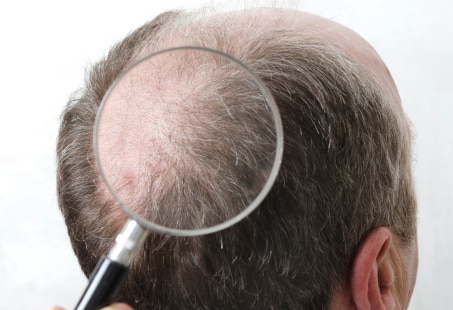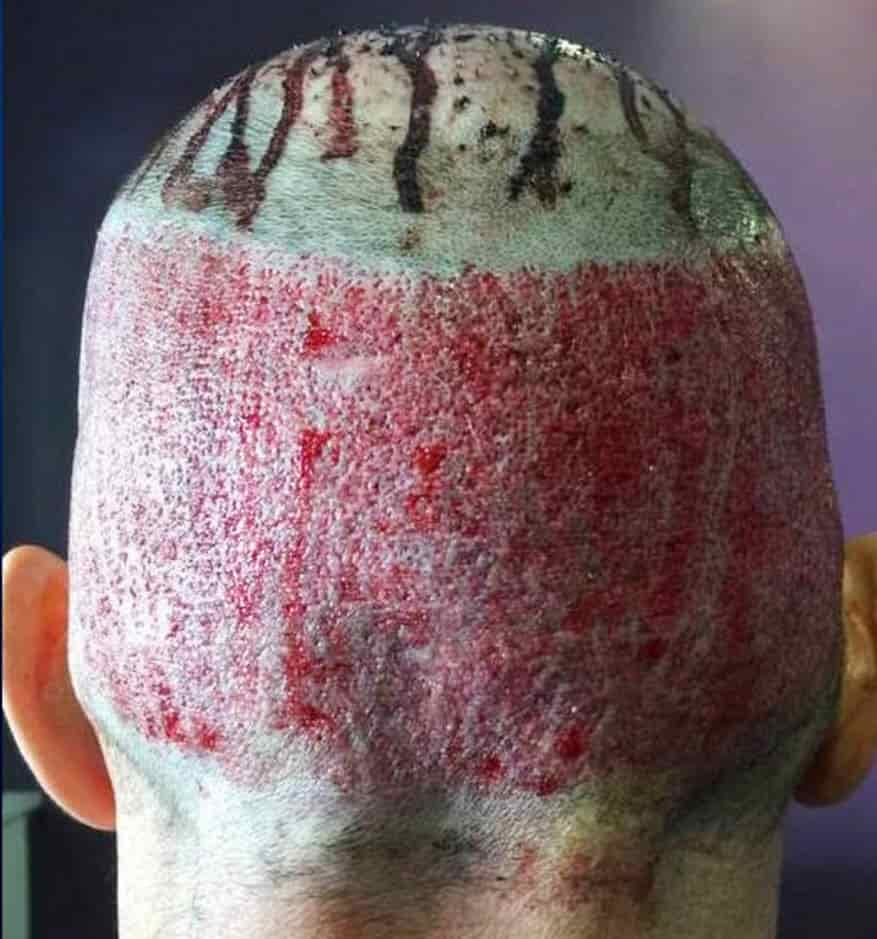Hair transplantation surgery is made possible through a specific “donor area” at the back of the scalp. It’s so-called because it “donates” hair for transplantation into the bald spots. But there’s a limited store of such hair at the back of your head. There is also an art to removing the existing hair in a way that does not leave the back bald at the expense of front coverage.
However, when too much hair is removed, it can give your donor area a permanent “moth-eaten” appearance. This is what’s called overharvesting. It’s one of the complications of hair transplant surgery, but it is possible for you to prevent it.
What Is An Overharvested Donor Area?
A donor area is called overharvested when too many hair grafts have been extracted from it, leaving it bare-looking. The scalp is also clearly visible through the hair in such a case, and depending on how the hair was harvested, the area may be clearly demarcated.
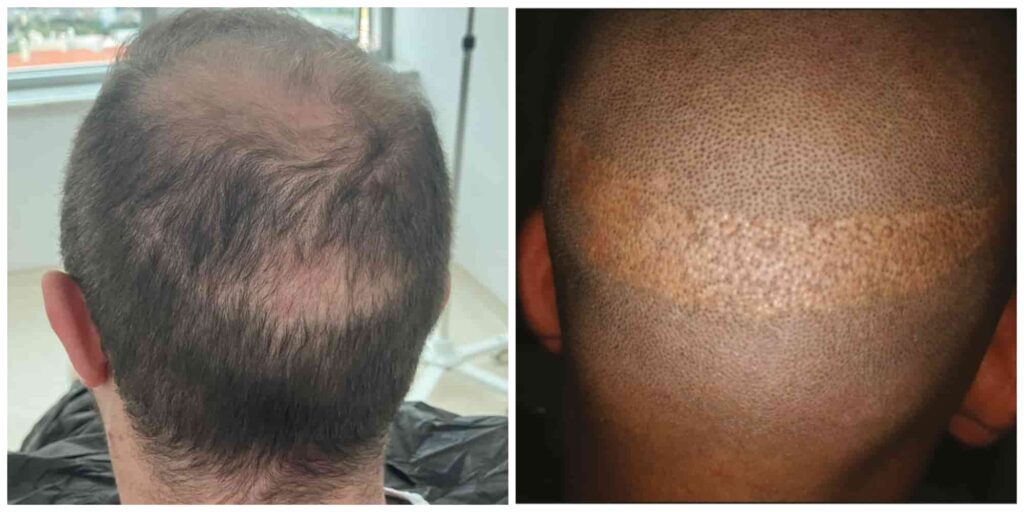
In general, you might see two different types of overharvesting of the donor area:
- The entire area at the back of the head is overharvested, which makes it look thinned out.
- Hair is taken out of certain areas more than others, giving the donor area a patchy appearance.
But here, it’s important to note that overharvesting of the donor area is not the same as shock loss. You can experience a temporary “shock” hair loss in both the donor and recipient area after surgery.
However, in this case, you should start growing hair after 3 months so the density of your donor area will improve with time. Done well, it should look quite natural even though, overall, there will be fewer hair in the donor area after transplantation surgery.
What Happens If Donor Area Is Overharvested?
In addition to giving aesthetically poor results, overharvesting of the donor area will also make the scarring from follicular unit extraction (FUE) visible.
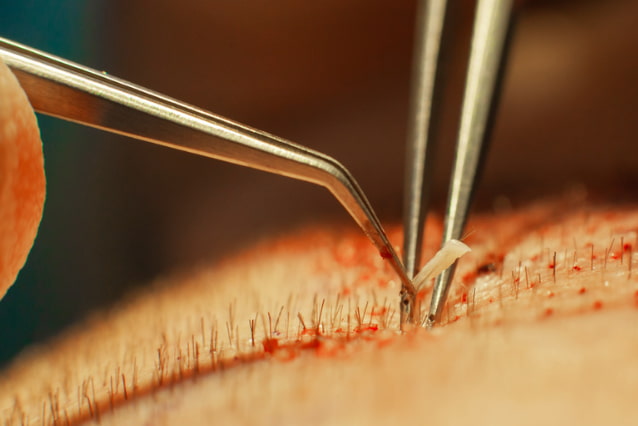
A 2018 study titled, “Donor Harvesting: Follicular Unit Excision” also noted that overharvesting can lead to “chances of necrosis of donor skin” – meaning skin death – and shock loss of hair follicles in the donor area.
You can end up experiencing permanent damage to your donor area, and it can also take away the opportunity to harvest more hair grafts for any future transplantation surgery. Without enough hair in the donor area, you can’t have more surgeries to cover your bald spots.
What Causes Overharvesting In The Donor Area?
Overharvesting of the donor area largely comes down to the inexperience, lack of knowledge and skill of the surgeon performing the hair transplant. It may happen if:
- Your surgeon removes too many grafts close together in an area.
- Your surgeon isn’t aware of how many grafts to safely extract from a particular area
- You have extensive balding but not enough donor hair to cover the entire scalp
- Your surgeon hasn’t accounted for the characteristics of your hair and scalp
The type of hair you have (curly, straight, thick, fine, etc.) as well as its contrast with the colour of your scalp is also an important factor to consider. That’s because, for instance, someone who has thin, straight and dark hair but fair skin, their scalp might generally be more visible through their hair, so the surgeon has to be more careful about how many grafts to extract.
Even with a robotic hair transplant, you may experience this issue because the procedure uses a small square placed at the back of the head from where the robot extracts the grafts. The smaller donor area can leave it thinned out. However, this surgery also requires the supervision of the surgeon, so their experience and skill matters here as well.
It’s also important to consider whether the large number of grafts quoted to you by a clinic is an attempt to justify their inflated prices. Finding an experienced, qualified and board-certified medical professional who is sincere to you is, therefore, very important.
How Many Grafts Can Be Safely Extracted From The Donor Area?
Harvesting more than 50% of the “original terminal hair” can make the donor area look “noticeably thin” following one or more FUE transplants, as per a 2018 study published in the Hair Transplant Forum International.
It’s also important to note that there is a specific “safe donor area” at the back of the head from where grafts are extracted as other areas might be at risk of thinning and falling off. There are other factors to consider as well, such as the characteristics of your hair and the size of your balding area, among others. So, again, make sure to find a good surgeon.
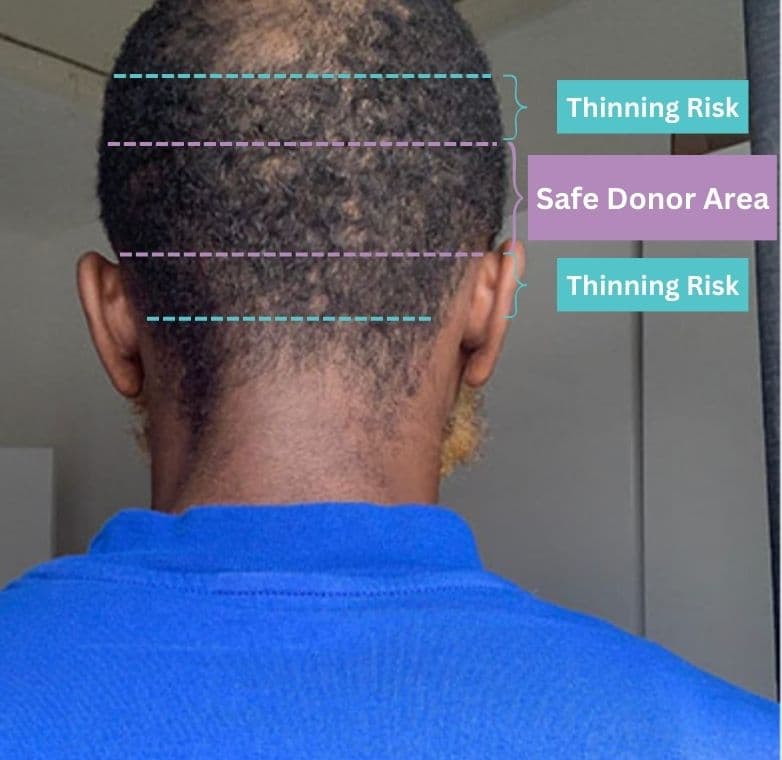
How Do You Know If Your Donor Area Was Overharvested?
Unlike shock loss, overharvesting of the donor area will leave you with permanent bald spots. Once the shock loss has subsided, your hair should start to grow and fill out the back of your head.
But if the damage is permanent, even after you’ve seen the final result of your surgery (which can take 12-18 months), the donor area will remain thinned out. That’s because the donor area doesn’t grow new hair to replace the one that was extracted.
How Do You Fix An Overharvested Donor Area?
A hair transplant is not exactly a “reversible” procedure, however, it may be possible to do some repair work. If you have hair in a certain part of your scalp that can be safely extracted, it can be used to cover a bald patch in the donor area and even out the density.
But it depends on the availability of such hair, how badly thinned out your donor area is, and whether or not you have bald spots at the front you’d preferably want covered, among other things.
Some also offer body hair transplants, where areas like your beard, chest, abdomen, etc., may be used as donor areas for extracting hair for the scalp. However, the problem with such hair transplants can be a low success rate and non-permanent results.
One popular treatment option in such an instance is scalp micropigmentation or SMP. It involves creating microdots on the scalp to mimic natural hair follicles. Therefore, it can provide camouflage by reducing the contrast between your hair and the skin of your scalp.
Additionally, your surgeon may also advise you to be on medical therapy for hair loss that may include medications like finasteride or minoxidil so you don’t lose more hair.
Conclusion
Unfortunately, overharvesting of the donor area is a common problem, but it can have very serious consequences for the patient. Not only can it negatively impact the mental health of the person experiencing this problem, but overharvesting can also be accompanied by physical problems, such as skin death.
No matter where you’re getting a hair transplant, make sure that you do your research in finding an experienced surgeon. Before your surgery, have a face-to-face consultation with them to understand how they’ll work to avoid such a risk. Because it will help you to get the most out of your hair transplant.
Reviewed and approved by Trichologist Yaprak Yazan
